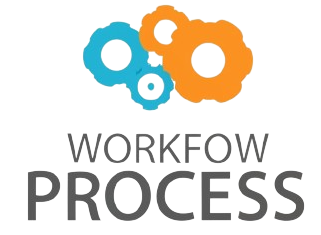Understanding MCPs (Model Context Protocols) is becoming increasingly important as technology evolves and systems become more interconnected. MCPs, or Model Context Protocols, refer to structured frameworks that manage and interpret contextual data between different models or systems to enable seamless communication and adaptability. This dynamic interaction is vital in various fields such as artificial intelligence, Internet of Things (IoT), and large-scale software development, where context-sensitive responses are required. By harnessing MCPs, systems gain the ability to adjust behaviors based on contextual cues, improving efficiency and decision-making. This article will explore what MCPs are, their key components, practical applications, and the future potential of this innovative approach in modern technology.
What are model context protocols?
Model context protocols (MCPs) are formalized sets of rules and processes that allow different models—whether machine learning algorithms, software components, or data systems—to exchange information based on context. Essentially, MCPs provide a way to interpret, share, and react to environmental or situational data alongside core model outputs, ensuring behavior is appropriate to current conditions.
For example, consider a smart thermostatic system that adjusts home temperature. The system uses several models: one predicting weather, another learning user preferences, and an external one monitoring local events like holidays. MCPs coordinate these models by exchanging relevant context (e.g., today’s holiday means occupants might be home) and enable the thermostat to adjust automatically.
This coordination prevents mismatched outputs—such as heating the house on a warm day simply because it’s early morning—by integrating context signals. MCPs formalize these interactions so models remain independent yet collaborative.
Key components of MCPs
To function effectively, an MCP involves several crucial components:
- Context data definition: Identifying the specific environmental or internal signals relevant to the application (e.g., location, time, user state).
- Model interfaces: Protocols for models to share and receive context information.
- Context interpretation: Algorithms or rules to translate raw data into actionable insights.
- Adaptation mechanisms: Methods for altering model outputs or behaviors based on interpreted context.
Imagine a vehicle navigation system that uses MCPs. Context data includes traffic conditions, weather, and driver preferences. Models share this data, interpret it (heavy traffic means delays), and adapt route suggestions accordingly. The MCP defines how and when these inputs flow between models to optimize navigation.
| Component | Role | Example in navigation system |
|---|---|---|
| Context data definition | Set relevant signals | Traffic speed, weather, time |
| Model interfaces | Communication channels | APIs exchanging live traffic data |
| Context interpretation | Analyze data to inform decisions | Detect traffic jams or poor road conditions |
| Adaptation mechanisms | Modify outputs based on context | Suggest alternate routes or delay departure |
Applications of MCPs in modern technology
MCPs have found diverse applications in areas where context is key to optimal performance:
- Smart home automation: Contextualize user activities (e.g., presence, lighting conditions) to automate appliances intelligently.
- Healthcare monitoring: Interpret patient vitals in context for early detection of anomalies.
- Autonomous vehicles: Combine sensor data and environmental context to make real-time driving decisions.
For a practical use case, consider healthcare. An MCP-enabled monitoring system combines models for heart rate, blood oxygen, and physical activity. By sharing context such as recent exercise or medication intake, the system can more accurately detect signs of distress and alert caregivers, reducing false alarms caused by isolated data interpretations.
Challenges and best practices for implementing MCPs
While promising, deploying MCPs presents challenges such as:
- Data integration: Aggregating diverse and heterogeneous context information can be complex.
- Latency concerns: Context data must be processed quickly to maintain relevance in fast-changing environments.
- Standardization: Lack of unified protocols makes interoperability difficult.
A practical example comes from IoT networks in industrial settings. Machines generate massive data streams requiring near-instant analysis. Implementing MCPs helps but demands efficient algorithms and careful protocol design to avoid bottlenecks. Best practices include modular designs, edge processing to reduce latency, and adopting open standards when possible.
The future of MCPs and evolving contexts
MCPs are poised to become essential as systems grow more interconnected and contextually aware. Advances in AI and 5G enable richer and faster context exchanges, expanding MCP capabilities. Emerging trends include:
- Adaptive AI ecosystems: Models that continuously learn from shared context to refine performance.
- Cross-domain environments: MCPs integrating data from unrelated systems, like combining weather and financial models for risk management.
- Privacy-aware context sharing: Protocols that safeguard sensitive data while maintaining contextual richness.
Consider a smart city that integrates traffic controls, emergency response, and utility management. MCPs will coordinate diverse systems dynamically, improving efficiency, safety, and sustainability. This vision highlights the transformative potential of Model Context Protocols.
Conclusion
Model Context Protocols stand at the forefront of enabling adaptable, context-aware systems by linking independent models through defined communication rules. Through components like context definition, model interfaces, and adaptation, MCPs ensure that systems respond intelligently to their environments. Their applications range from smart homes to autonomous vehicles and healthcare, each leveraging context to boost accuracy and user experience. Although challenges like data integration and latency remain, best practices and evolving technologies are making MCP implementation more feasible. As models and systems become increasingly interconnected, MCPs will play a critical role in shaping how future applications understand and react to the world around them, driving smarter, more responsive technologies across all sectors.
